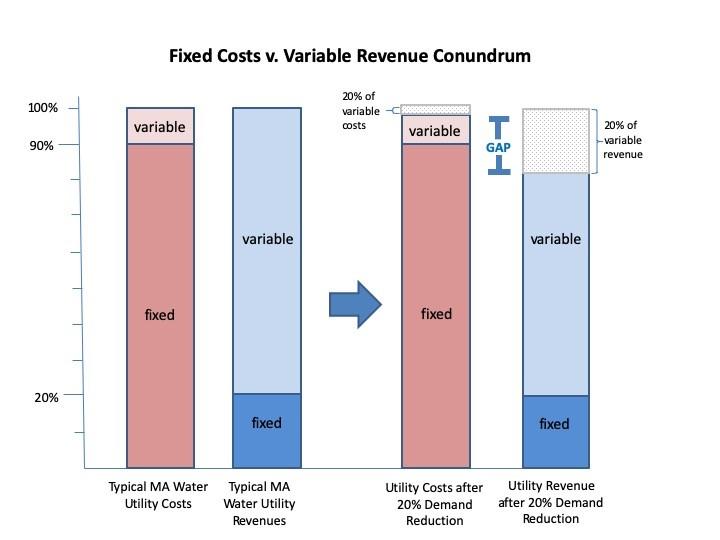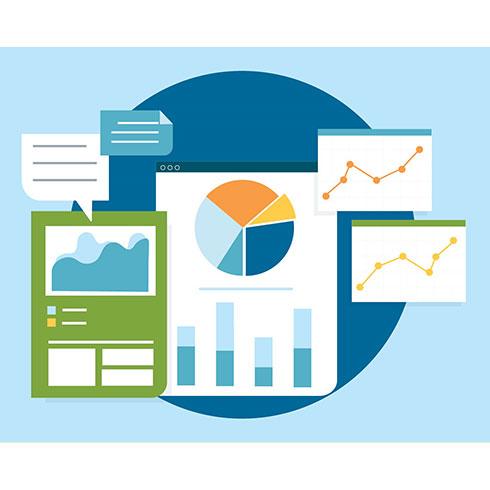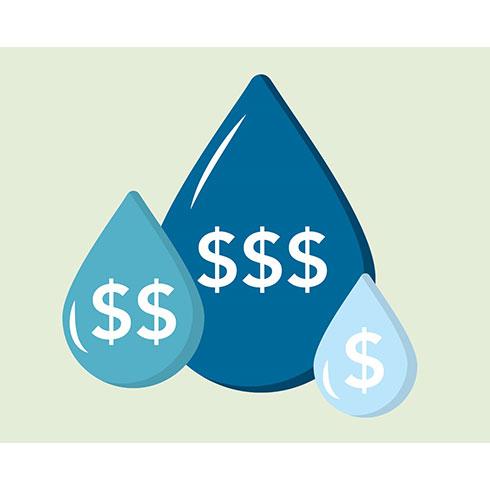Water Conservation / Revenue Loss Conundrum
Programs aimed at reducing demand can sound like a losing proposition. How can a utility thrive by working to sell less of its own product? The answer lies in rate structures that recover costs through the portion of their demand that represents efficient, base-line use – in other words, the portion of your demand you can always count on. Then, price signals and other conservation programming can aim to reduce inefficient and more discretionary uses, without suffering revenue shortfalls. This is easier said than done, but the guidelines and resources in this section are intended to help.
Fixed Costs / Variable Revenue Conundrum
In Massachusetts, suppliers’ short-term fixed costs often represent 90% or more of total costs. These costs (such as infrastructure maintenance, debt service, regulatory compliance, administration, and source protection) stay approximately the same no matter how much water is sold. However, most suppliers collect most or all revenues on a volumetric basis (charge-per-unit-sold). As a result, demand reduction can reduce revenues far more than costs, exacerbating financial gaps.
Download the Fixed Costs Variable Revenue Conundrum graph above
This conundrum, too, can be addressed with rate structures that recover fixed costs through the portion of demand that represents stable, baseline use (that is, the portion of your demand you can always count on) in combination with some amount of fixed fees. Then, sudden drops in discretionary use arising from a wet year or successful conservation programming, for example, don’t leave suppliers deep in the red. Establishing such a rate structure requires a solid understanding of your customer base’s water use patterns. For guidance on customer use data management and analyses, click here.










